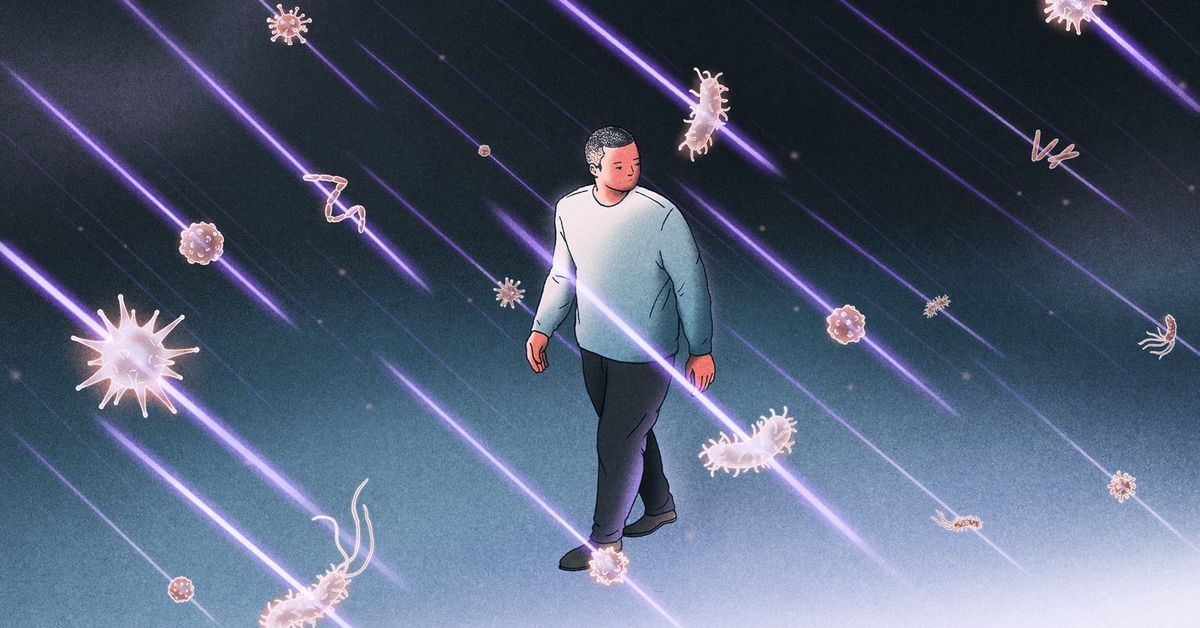- cross-posted to:
- [email protected]
- [email protected]
- [email protected]
- cross-posted to:
- [email protected]
- [email protected]
- [email protected]
There is a discussion on Hacker News, but feel free to comment here as well.
TL;DR: The article discusses the use of far-ultraviolet (far-UV) light as a promising technology to kill airborne viruses and bacteria in public spaces, potentially reducing the spread of respiratory infections. While it shows promise in being safe for humans and effective against pathogens, concerns about creating air pollution and the need for further research are highlighted.
-
Far-UV Technology: A novel form of ultraviolet light that can kill airborne viruses and bacteria, potentially reducing respiratory infections in public spaces.
-
Safety and Effectiveness: Far-UV light, especially around 222 nm wavelengths, is effective against pathogens and appears safe for human skin and eyes.
-
Historical Context: UV light has been known for over a century to kill bacteria and viruses, but traditional UV can harm humans.
-
Research Findings: Studies show far-UV light reducing airborne bacteria by 98.4% and killing 99.9% of coronaviruses in controlled environments.
-
Concerns: Far-UV light might generate ozone and interact with volatile organic compounds, potentially leading to air pollution and health risks.
-
Need for More Research: Further studies are necessary to understand the long-term effects of far-UV light and how to use it effectively alongside other air purification methods.
-
This is the best summary I could come up with:
Ultraviolet retained a small coterie of enthusiasts over the ensuing decades, focused narrowly on preventing transmission of tuberculosis — which has no reliably effective vaccine for adults — in its remaining hotbeds, like homeless shelters.
The biggest test it received, the Tuberculosis Ultraviolet Shelter Study of 1997-2004, demonstrated that “upper room” UV, in which UV-emitting lamps are placed at least 6.9 feet above the floor where they can disinfect air without harming humans, was safe.
It wasn’t — detective work from scholars including Linsey Marr, Jose-Luis Jimenez, and Katherine Randall in the middle of the pandemic determined that this conclusion was based on a misinterpretation of the Wellses’ research that had somehow persisted for decades in the medical profession.
“This is the most difficult talk I’ve had to give in my career,” Jose-Luis Jimenez, a distinguished professor of chemistry at the University of Colorado, told the audience at the first International Congress on Far-UVC Science and Technology this past June.
But 2020 was also an unusually brutal year for airborne disease: 49,783 Americans died from influenza in 2019, for instance (and none from Covid); 1 percent of that number is about 500 people, which starts to feel comparable to the air pollution cost Jimenez identifies.
Jimenez favors using UV in very high-risk locations, such as hospitals, but worries that construction companies, schools, malls, and the like will seize on the potential of far-UV as an excuse not to invest in proper ventilation and filtration, leaving us with the ugly trade-off he identifies.
The original article contains 4,104 words, the summary contains 252 words. Saved 94%. I’m a bot and I’m open source!
This summary is missing tons of context and most of the useful information. It’s a poor summary at best and doesn’t really reflect the overall message of the article.
I mean, that headline positively reeks of Betteridge’s law; I didn’t even click on the article because it’s pretty much guaranteed to be journalistic porridge
This article was more interesting than its headline would suggest.


